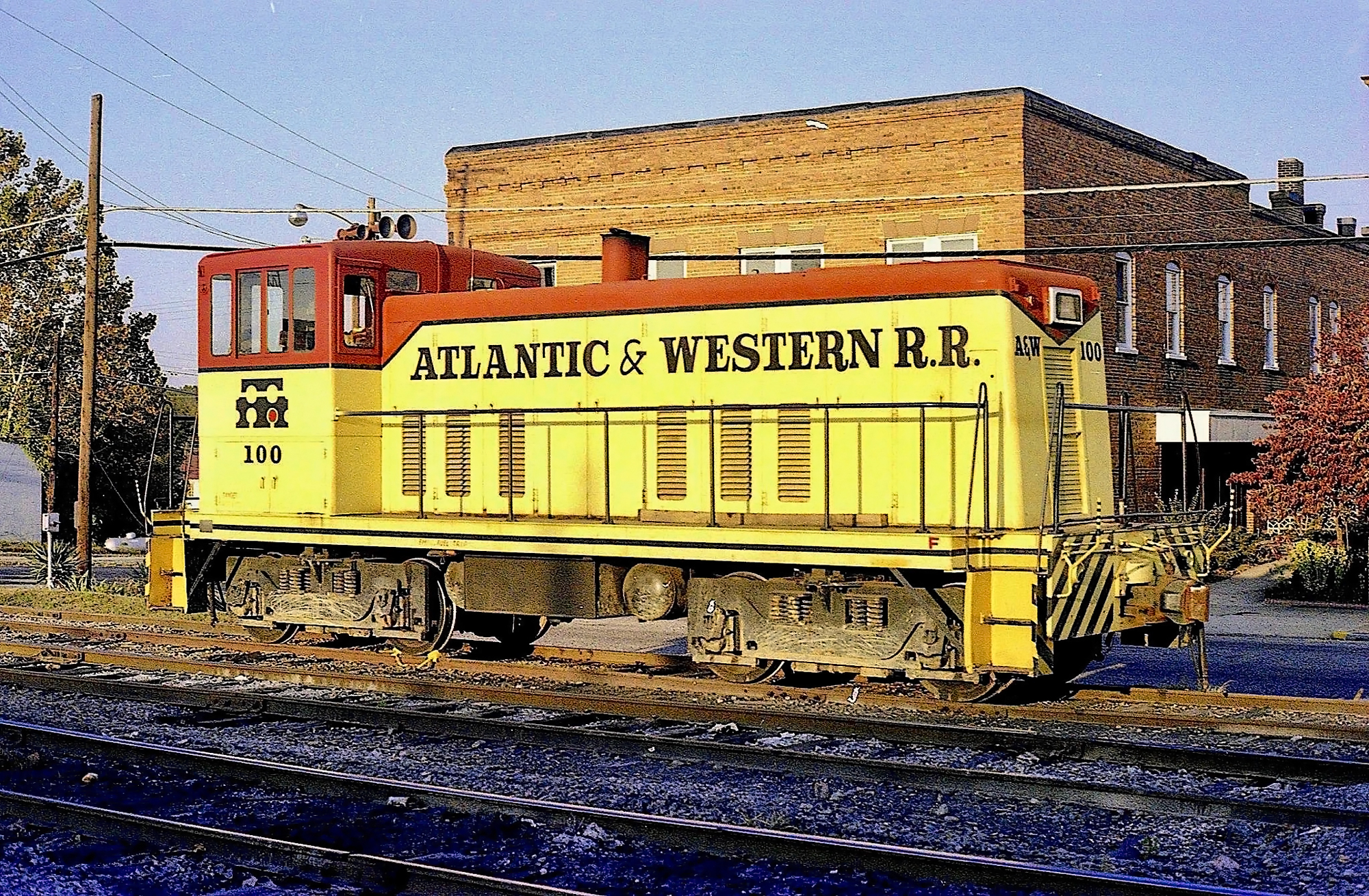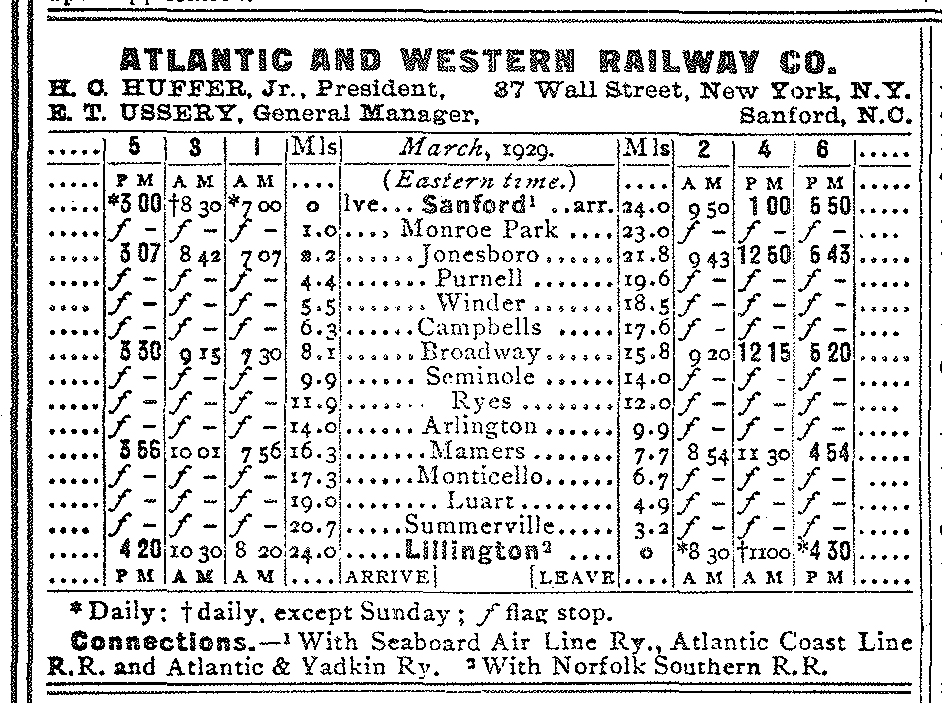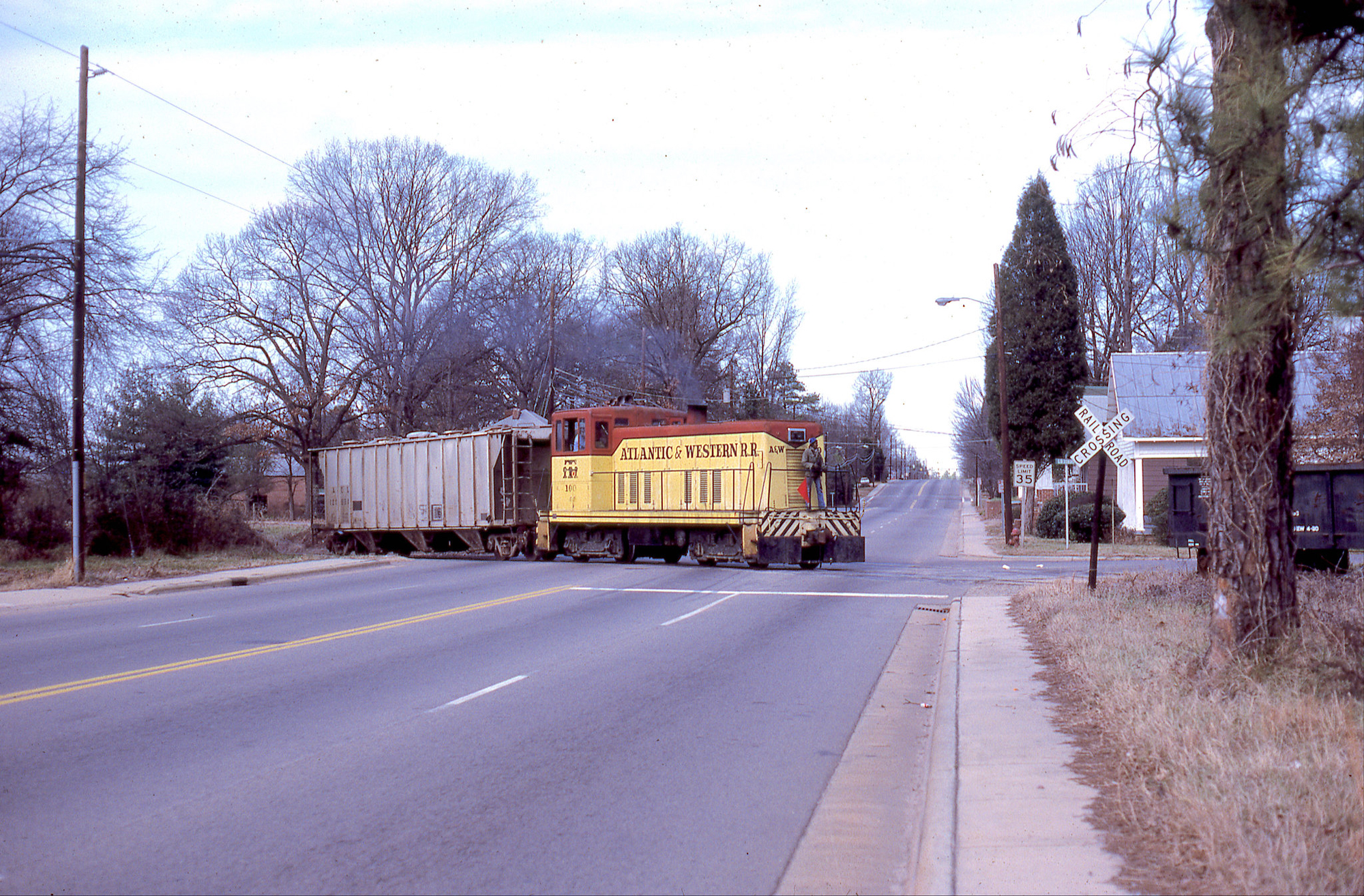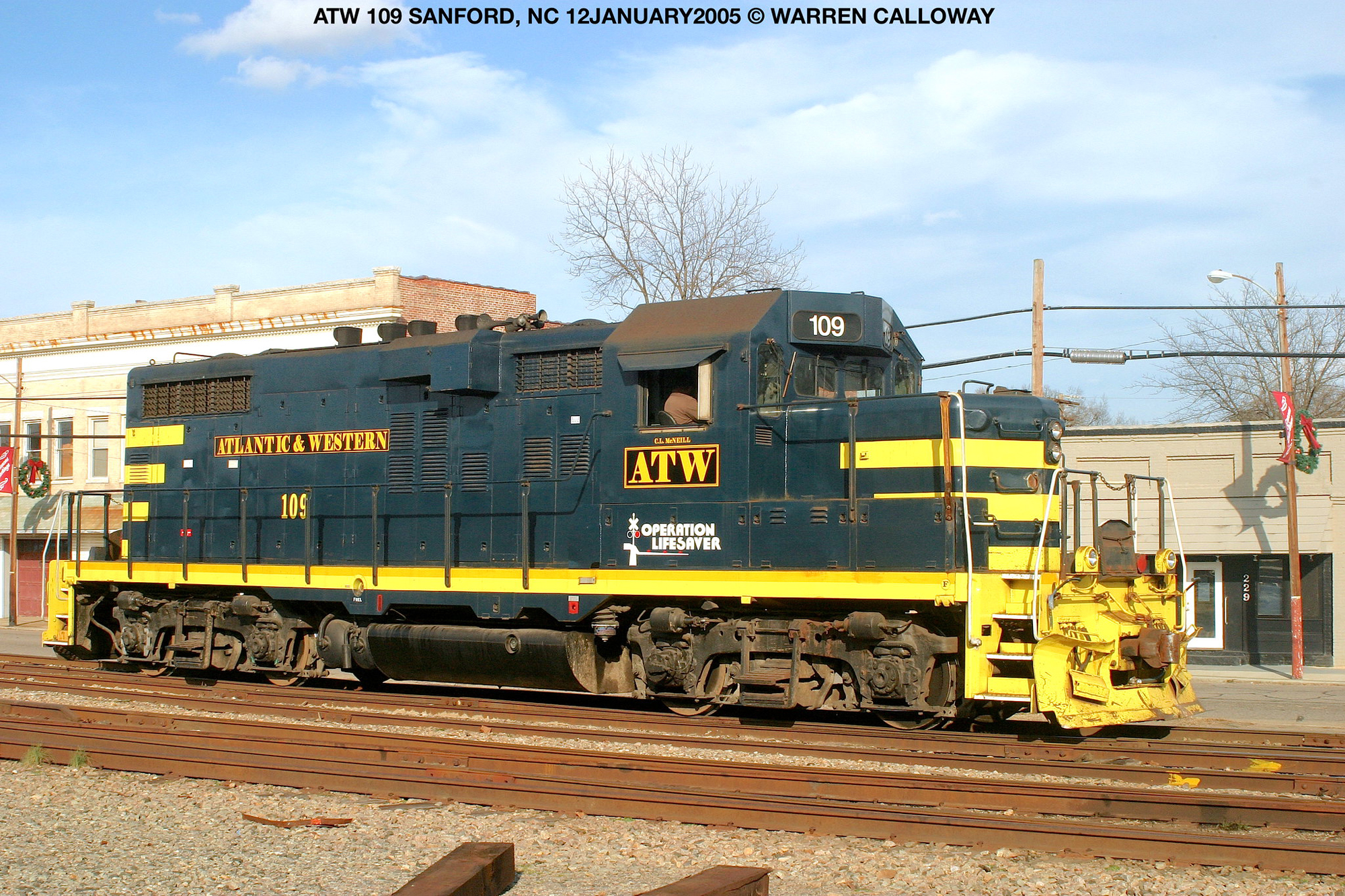Atlantic and Western Railway: A Central NC Short Line
Published: August 1, 2024
By: Adam Burns
The Atlantic and Western Railway (A&W) is a short-line railroad with a history rooted in serving North Carolina's industrial agriculture.
Established in 1896, the A&W began as a narrow-gauge logging railroad in Lee County, North Carolina. Initially, it operated to facilitate the transportation of timber from local forests to various markets, making it crucial for the regional economy.
In its early years, the A&W underwent significant transformations. By the early 20th century, the railway converted from narrow-gauge to standard-gauge, enabling it to connect more efficiently with major railroads and facilitating broader trade and transportation networks. This transition also allowed for the transportation of agricultural products, particularly tobacco and cotton, which were key economic drivers for North Carolina.
The mid-20th century saw further developments. The A&W redefined its operations to focus on freight services, particularly serving the region’s growing industrial sector. This period was marked by modernization efforts, including the acquisition of diesel locomotives to replace the aging steam engines.
In the latter half of the 20th century, the railway faced challenges common to many short-line railroads, including competition from road transport and economic shifts impacting the industries it served. However, strategic management and a focus on niche markets enabled it to survive and adapt.
Today, the A&W operates as part of the Genesee & Wyoming Inc. family of short-line railroads. Its primary operations include providing efficient freight services, connecting local industries to larger national and international markets. The line is known for its tailored logistical solutions, offering flexibility to meet the specific needs of its customers.
The legacy of the Atlantic and Western Railway is a testament to its adaptability and strategic relevance. From its origins as a logging railroad to its contemporary role in freight transportation, the A&W has continually evolved to serve the changing economic landscape of North Carolina. With a focus on sustainability and efficiency, it remains a vital component of the region’s transportation infrastructure.
 Atlantic and Western 70-tonner #100 seen here at Sanford, NC during the 1970s. Warren Calloway photo.
Atlantic and Western 70-tonner #100 seen here at Sanford, NC during the 1970s. Warren Calloway photo.Origins
The Atlantic & Western Railway Company was officially chartered on March 7, 1899, backed by the Edwards family of Sanford, North Carolina.
This initiative came about as the Edwards family took over the operation of an existing 12-mile logging line that stretched westward from Hope Mills, originally constructed by the Enterprise Land & Improvement Company.
Modern Operations
Construction on what would become the core of the original Atlantic and Western Railroad began in 1903 and unfolded in several phases.
Over the next decade, the railway extended 26 miles eastward from Sanford to Lillington, achieving a significant milestone by connecting these two points.
An ambitious plan to further extend the line to Goldsboro was envisioned, yet like many projects of that era, it was thwarted by insufficient capital and ultimately never realized.
The newly constructed 26-mile eastern stretch of the A&W traversed a landscape dotted with small farming communities. Commerce in this region was minimal, with agriculture forming the bulk of the railway's shipping business.
Despite the limited commercial opportunities, this route held considerable importance for passenger travel. The line also established a vital connection with the original Norfolk Southern Railway in Lillington, underscoring its strategic significance within the local transportation network.
Timetable (March, 1929)

In 1926, the Atlantic and Western Railway underwent significant changes when it entered foreclosure. Emerging from financial reorganization under the new name Atlantic and Western Railway, it operated under this moniker until 1970.
The most notable alteration was the abandonment of the line from Jonesboro Heights to Lillington in December 1961. Given the context of the times, this substantial reduction in the rail network was unsurprising.
Passenger service had already ceased in 1948, and historical aerial photos and maps from the 1950s show few shippers along this section. Essentially, the only significant loss was the connection with the Norfolk Southern Railway at Lillington, leading the A&W to function as a small hub concentrated in Sanford.
Further restructuring occurred in 1970 when the railway began operating as the Atlantic and Western Corporation. In 1988, it came under the ownership of Rail Management and Consulting. During this period, the A&W expanded by acquiring a section of former A&Y track that extended north from Sanford to Cumnock.
Diesel Roster (All-Time)
| Model | Builder | Road Number | Serial Number | Completion Date | Notes |
|---|---|---|---|---|---|
| 70-Tonner | GE | 100 | 30452 | 9/1950 | Out of service |
| 70-Tonner | GE | 101 | 29467 | 1948 | Ex-LRS 102 (2nd) < MMAX 203 < Superior Stone 203 < nee High Point Thomasville & Denton 203 |
| GP10 | EMD | 107 | 23867 | 1/58 | Ex-Merridian & Bigbee 107 < IC 8109 < ICG 8109 < IC 8109 < nee IC 9367 |
| GP10 | EMD | 109 | 22074 | 7/56 | ex-Merridian & Bigbee 109 (2ND) < IC 8323 < ICG 8323 < DRGW 5943; OLS logo |
| SW1200 | EMD | 202 | 20060 | 10/1954 | Ex-M&B 1208 < Milw 630 < nee Milw 2025(1st); lettered for Rail Switching Service in RSS colors |
| SW1200 | EMD | 203 | A760 | 5/56 | GMDD-built; ex-RLCS 1281 < CN 1219 < nee CN 1590 |
| SW1200 | EMD | 1219 | A760 | 5/56 | Scrapped; GMDD-built; ex-Canadian Pacific; lettered for Rail Switching Service and wears RSS colors |
| GP15-1 | EMD | 1578 | 817017-3 | 2/82 | Ex-UPY 667 < nee MP 1677 |
| GP7 | EMD | 1603 (2nd) | 16372 | 5/52 < ATSF 2728 | Later renumbered 1612. Ex-SCRF < GSWR 2027 < AT&SF 2027 < nee ATSF 2728 |
 Atlantic & Western 70-tonner #100 switches a cut of cars at East Rose Street in Sanford, North Carolina on December 26, 1984. Warren Calloway photo.
Atlantic & Western 70-tonner #100 switches a cut of cars at East Rose Street in Sanford, North Carolina on December 26, 1984. Warren Calloway photo.Present Day
The present-day A&W is a result of its acquisition by Genesee & Wyoming Inc. in 2005—a global company that operates short-line railroads in five countries.
Under G&W's ownership, the A&W enhanced its operations by securing additional shipping access through an agreement with Norfolk Southern in 2011, allowing it to operate on the line between Cumnock and Brickhaven. This strategic move has strengthened the A&W’s position as a critical player in regional freight services.
The railroad currently operates about a 10-miles, including a very short segment of the original Lillington route to Jonesboro Heights. It currently sees about 3,000 carloads annually.
Recent Articles
-
Rio Grande 2-8-2 Locomotives (K-37): Specs, Roster, Photos
Apr 15, 25 12:57 PM
Rio Grande's Class K-37 Mikes were itsdge steamers to enter service in the late 1920s. Today, all but two survive. -
Rio Grande 2-8-2 Locomotives (K-36): Specs, Roster, Photos
Apr 15, 25 11:09 AM
The Rio Grande's K-36 2-8-2s were its last new Mikados purchased for narrow-gauge use. Today, all but one survives. -
Rio Grande 2-8-2 Locomotives (Class K-28): Specs, Roster, Photos
Apr 14, 25 10:24 PM
Rio Grande's Class K-28 Mikados were its newest narrow-gauge steam locomotives since the Mudhens of the early 1900s. Today, three survive.



